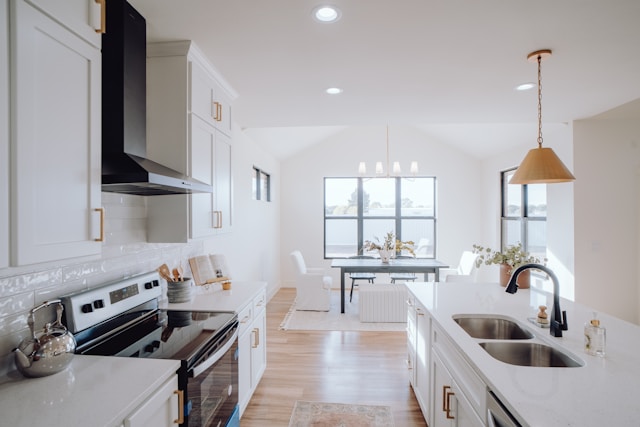In a world of rising energy costs and growing environmental concerns, making your home more energy-efficient is one of the smartest decisions you can make. Whether you’re a homeowner looking to lower utility costs or a renter aiming for a greener lifestyle, energy-saving home improvements offer a range of benefits immediate savings, increased comfort, and a reduced carbon footprint.
You don’t need a full-scale renovation to start seeing results. From simple fixes to more ambitious upgrades, there are practical ways to transform your space into a more energy-efficient home and save money in the process.
Why Choose Energy-Efficient Upgrades?
Before jumping into the specific improvements, it’s worth understanding the broader advantages of energy efficiency:
-
Lower energy bills: Upgrades help you use less electricity, gas, or water leading to significant monthly savings.
-
Increased property value: Homes with modern, energy-efficient systems are more appealing to buyers and renters.
-
Rebates and incentives: Many local governments and utility companies offer financial incentives for energy-efficient upgrades.
-
Environmental impact: Reducing your energy consumption cuts down on greenhouse gas emissions and supports sustainability.
Energy-efficient upgrades aren’t just about going green they’re a practical investment that benefits your wallet and the planet.
Budget-Friendly Energy Efficiency Tips
You don’t need a huge budget to start saving. Here are a few low-cost energy efficiency tips that deliver strong returns:
LED Light Bulbs
Swapping out incandescent or CFL bulbs for LEDs is one of the simplest ways to reduce utility costs. LED bulbs use up to 80% less energy and last significantly longer.
Smart Power Strips
Many electronics consume power even when turned off. Smart power strips detect when devices are in standby mode and cut off phantom energy drain.
Programmable or Smart Thermostats
Heating and cooling account for a large chunk of household energy use. A programmable thermostat adjusts temperatures automatically based on your schedule, while a smart thermostat learns your habits and maximizes efficiency.
Weatherstripping and Caulking
Drafty doors and windows are common culprits for energy loss. Sealing gaps with weatherstripping or caulk keeps warm or cool air inside, reducing the load on your HVAC system.
Low-Flow Showerheads and Faucet Aerators
These affordable plumbing upgrades help reduce water and energy use especially if you heat your water with gas or electricity.
Mid-Range Energy-Saving Home Improvements
If you’re ready to invest a bit more, these moderate-cost upgrades can lead to larger savings and comfort gains:
Energy Star Appliances
Appliances like refrigerators, dishwashers, and washing machines labeled with the Energy Star rating use significantly less energy and water than older models.
High-Efficiency Water Heaters
Tankless or energy-efficient storage water heaters heat water faster and with less waste, helping reduce both energy use and utility bills.
Improved Insulation
Adding or upgrading insulation in your attic, walls, or floors helps stabilize indoor temperatures year-round. This reduces the workload on your HVAC system and cuts heating and cooling costs.
Duct Sealing and Maintenance
Leaky air ducts can cause energy loss of up to 30%. Sealing ducts and insulating them where needed helps ensure your conditioned air actually reaches the rooms it’s meant for.
High-Impact Home Upgrades That Pay Off Over Time
For those planning long-term energy efficiency improvements, these larger investments can deliver the most substantial savings and value:
Solar Panels
Installing a solar energy system dramatically reduces or even eliminates your electricity bill. Many regions offer tax credits, rebates, and net metering programs that make solar a more affordable option than ever before.
Energy-Efficient Windows
Replacing single-pane windows with double or triple-pane insulated windows improves temperature control, reduces noise, and minimizes heat transfer.
Geothermal Heating and Cooling
Though costly upfront, geothermal systems use the earth’s stable temperature to heat and cool your home efficiently cutting energy use by up to 70% compared to traditional systems.
Reflective or Cool Roofing
Cool roofing materials reflect more sunlight and absorb less heat than standard shingles. This helps keep your home cooler in the summer, reducing air conditioning costs.
How to Prioritize Energy-Efficient Upgrades
Wondering where to begin? Here’s how to prioritize based on your goals and budget:
Conduct a Home Energy Audit
Start by identifying where your home is losing energy. You can do this yourself with online tools or hire a professional to assess everything from insulation to appliances.
Focus on High-Impact Areas
Target upgrades that deliver the greatest return: heating and cooling systems, insulation, and water heating.
Plan in Phases
Start with simple, low-cost fixes while budgeting for larger projects down the road. Even small changes can create momentum and measurable savings.
Take Advantage of Incentives and Rebates
To encourage energy efficiency, many governments and utility providers offer:
-
Tax credits for solar panels, insulation, and high-efficiency HVAC systems
-
Rebates on Energy Star appliances and smart thermostats
-
Financing programs for home upgrades with low-interest or no-interest loans
Visit websites like Energy.gov (for U.S. readers) or your local energy authority to find current programs in your area.
Conclusion
Making your home more energy-efficient doesn’t have to be overwhelming or expensive. By starting with simple upgrades and gradually investing in larger improvements, you can reduce your environmental impact and save money on energy bills. Energy-efficient upgrades are more than just smart they’re essential for building a home that’s comfortable, cost-effective, and future-ready.

